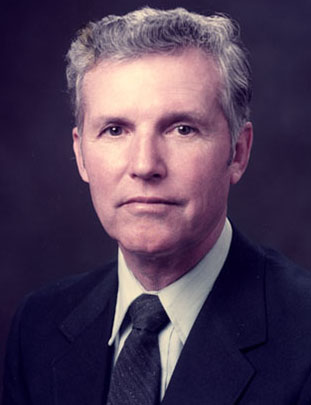
By DON FLETCHER
News Staff Writer
The playing field of J.M. Tate High School’s Pete Gindl Stadium in Cantonment, Fla., was recently renamed in honor of one of Escambia County High School’s “Barnes Boys,” a group that put together a streak of 29 straight football games without a loss in the 1940s.
The stadium’s playing surface is now officially known as Carl Madison Field in honor of the coaching legend, who was one of the standouts on an Atmore team that posted a collective 35-1-2 record during the four-year tenure of Coach Herbert Barnes. (The stadium at Escambia County High School is named for Barnes.)
Madison coached Tate High’s Aggies to the 1980 Class 4A Florida state championship and established himself over more than 45 years as one of the most successful high school football coaches in the nation. The 91-year-old gridiron tactician was joined by several of his former players, including many from the 1980 Tate High team, during the October 28 dedication ceremony.
The state title Tate won under Madison’s direction was not the only one he collected during his coaching career, most of which was spent in the Sunshine State. (He coached at five different Florida high schools, including Ernest Ward, and also served short stints at two schools in Georgia and one in Alabama.)
He led Pine Forest High School in Pensacola to state championships in 1987 and 1988. USA Today rated the 1988 team as its national champion, and Madison was named National High School Football Coach of the Year. He also coached Milton High to a state championship and won Coach of the Year honors five times in three states.
The venerable coach, who will turn 92 in January, was born in Uriah and reared in Atmore. He is a member of the Florida High School Athletic Association Hall of Fame. Madison’s teams posted a 326-129-7 record during his coaching days in Florida, a mark that represents the second-most all-time victories among the state’s high school football coaches. (Summerville’s John McKissick reportedly holds the record with 620 triumphs.)
Madison attended Texas Tech on a football scholarship, starting several games before being injured, and later played quarterback for Troy State (Ala.) Teachers College. He had played tailback under Coach Barnes from 1945 to 1947, when he became one of Atmore’s semi-famous “Barnes Boys.”
According to Alabama High School Football History, the Blue Devils finished 7-1-1 in Barnes’s first year. They played T.R. Miller to a 0-0 tie and lost their final contest of the 1944 season (14-7 to Baldwin County).
The Atmore squad didn’t lose another game over the next three years (1945-47) under Barnes’s tutelage. The only blemish on the team’s collective 28-0-1 record was a 7-7 tie with T.R. Miller in 1946. Barnes’s teams never allowed more than 41 points in any season, and his 10-0 1947 team scored a school record 454 points.
Alabama had two separate all-state teams in those days. Madison earned honorable mention on the Montgomery Advertiser All-State Team in 1947, as did James Emmons. Teammates Fred Dees and Judson Brawner were each named to the Advertiser’s first-team squad and the second unit of the Birmingham News team.
(The Blue Devils continued the streak of “glory days” after Barnes left, winning the first five games of a 9-1-1 season in 1948, extending the school’s undefeated streak to 34 games before a 7-0 loss to Foley.)
Under the guidance of E.H. Penny and Bill Golson, ECHS went 29-2-1 over the three years immediately following the legend’s departure, accenting the school’s domination of area football play. From 1944-1950, the Blue Devils posted an overall record of 64-3-3.
Madison, who served in the U.S. Army from 1950-52, began his coaching career in 1957 at Ernest Ward High School in Walnut Hill. He stayed there four years before moving to Milton High in 1961, following in his mentor’s footsteps by coaching Milton teams to 34 straight wins at one point. He also coached at Forest Park High School in Georgia, where his team played for the 1968 state championship.
In 1971, Madison joined the Tate staff and coached there until 1983, when he moved to Pensacola High for two years before moving again, this time to Pine Forest. From 1989 until 2002 he coached at Westover High in Albany, Ga., returned to Milton for 10 years and spent another short period at Pensacola High.
In 2002 he proved he still had the right stuff, signing on at age 71 to coach tiny Jackson (Ala.) Academy. Madison took over a team that had gone 0-10 prior to his arrival and lost the first two games of his debut season. But the team went on to win the state championship, then followed that up with an undefeated season and another state title the following year.
The Jackson Academy stint marked the end of Madison’s head-coaching career, but he extended his overall coaching tenure when he came out of retirement in 2009 and served briefly as an offensive consultant for Tate High’s team.
Madison’s progression from a toddler in tiny Uriah, to a Barnes Boy in Atmore, to a state, regional and national coaching legend, was steady and impressive.
The recent renaming and rededication of Tate High’s playing field is a fitting tribute to a smalltown boy who grew into a man and gained widespread notoriety by following the career roadmap laid out by his former coach.
